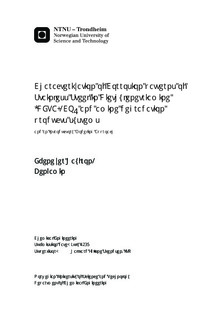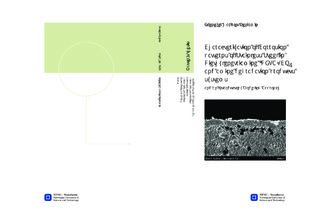| dc.description.abstract | Diethylenetriamine (DETA) which has three amine functional groups and touted to be potential CO2 mitigation solvent has been shown to have high loading capacity, faster absorption rates, lower activation energy than the benchmark solvent monoethanolamine (MEA). The main drawback in using DETA and other amines is in the area of plant equipment corrosion, a significant capital investment loss in the event of excessive and uncontrolled corrosion. Corrosion dent on global investment in Carbon Capture and Storage (CCS) technologies can run into the hundreds of billions of US dollars. These mitigating drawbacks will need to be fully addressed before commercial scale plants based on these amines are established. From a pure capital expense point of view stainless steel will likely be preferred as a construction material to carbon steel in critical parts of an absorption such rich-amine piping, cross exchanger tubes and internals of the reboiler and stripper. The premise for this work was thus focused on an important aspect of the value chain of CCS technology development: corrosion of stainless steel materials in a diethylenetriamine-CO2 - degradation products environment and an introductory modeling approach. The methodology used for investigating corrosion were: weight-loss of stainless steel coupons and electrochemical tests(Tafel plot polarization and Linear Polarization Resistance), Inductively coupled plasma mass spectrometry(ICP-MS) for corrosion solution analysis, and scanning electron microscopy(SEM) and energy dispersive X-ray spectroscopy(EDS) for the surface morphologies. A diethylenetriamine concentration of 2.5M , loaded with CO2 with two ratios of mole CO2 to mole DETA (i.e. α = 1.2 and max) , 1-2wt% of heat stable salts(HSS) being formate, acetate and oxalate, temperatures of 135oC and 80oC, and a time period of one(1) to five(5) weeks were the parameters for testing. The results indicated that CO2 pre-loaded diethylenetriamine caused extensive corrosion of stainless steel, corrosion was enhanced in the presence of HSS species in the order [DETA + acetate] > [DETA + oxalate] > [DETA + formate], [DETA]. Tafel plot analysis showed that the oxalate systems were the most corrosive in the DETA- CO2 environment with a high of 26.52 mm /yr. , with a relatively high current density i corr = 2.0719095 mA/cm 2 after only 13 hours on stream. Furthermore, the effect of the operating temperature has a significant impact on the corrosion rates. Faster kinetics at higher temperatures results in the quick transport of corrosion species and hence higher corrosion rates. For example DETA containing no acid system, at 80o C has corrosion rate of only 4.587E-06 mm/yr compared to 0.872 mm/yr at 135o C. ICP-MS revealed that the phenomenon of selective corrosion of the elements contained in stainless steel were not present. Surface morphology of the stainless steel specimen done with the scanning electron microscopy (SEM) showed the following types of surface features: flaky, porous, flowery and layers of corrosion products, fine plates typical of lepidocrocite, cotton ball shaped features typical of geothites, and severe pitting at the edges of the sample. Finally a review of simple mechanistic model was introduced that can be applicable to DETA corrosion and covered key reactions in corrosion of stainless steel in deithlenetriamine-CO2 - H2 O medium. The key reactions being : electrochemical reactions at the steel surface, diffusion of species to and from the bulk including diffusion through porous surface films, migration due to potential (electric field) gradients, surface film precipitations and the accompanying fluxes. | nb_NO |

